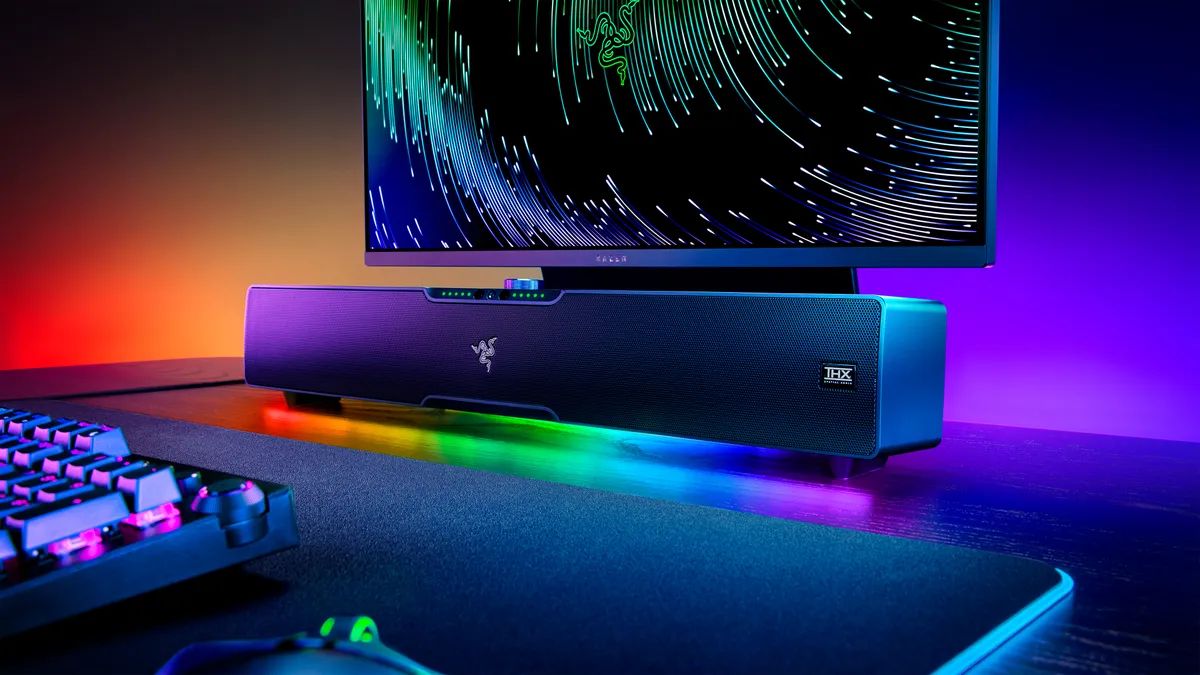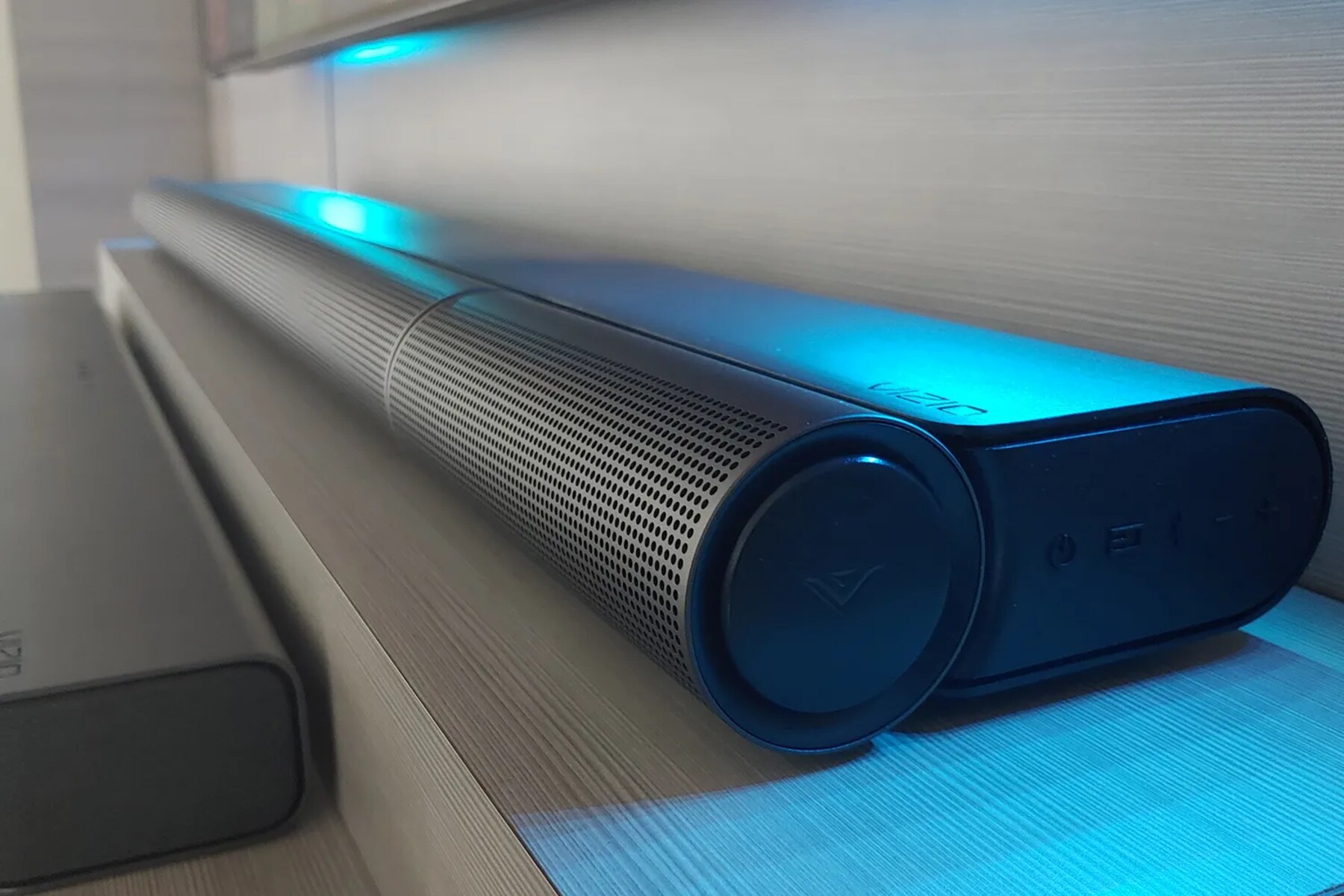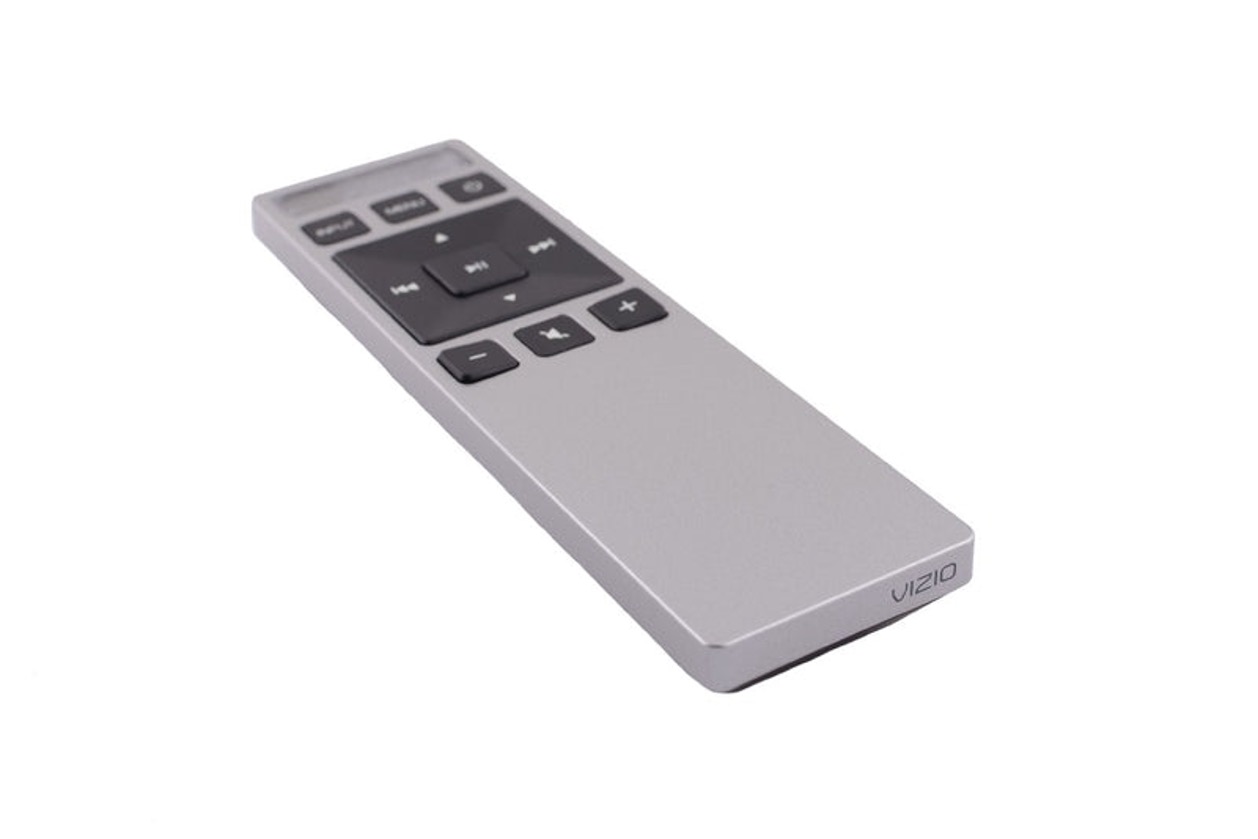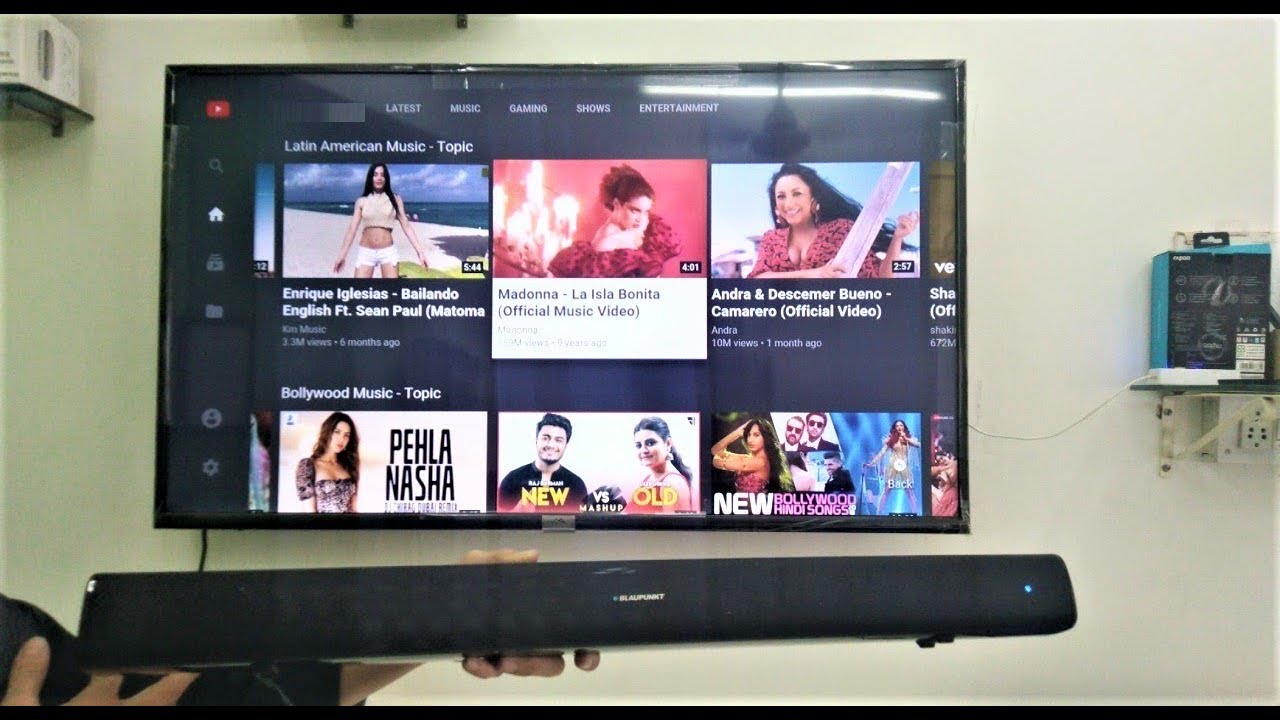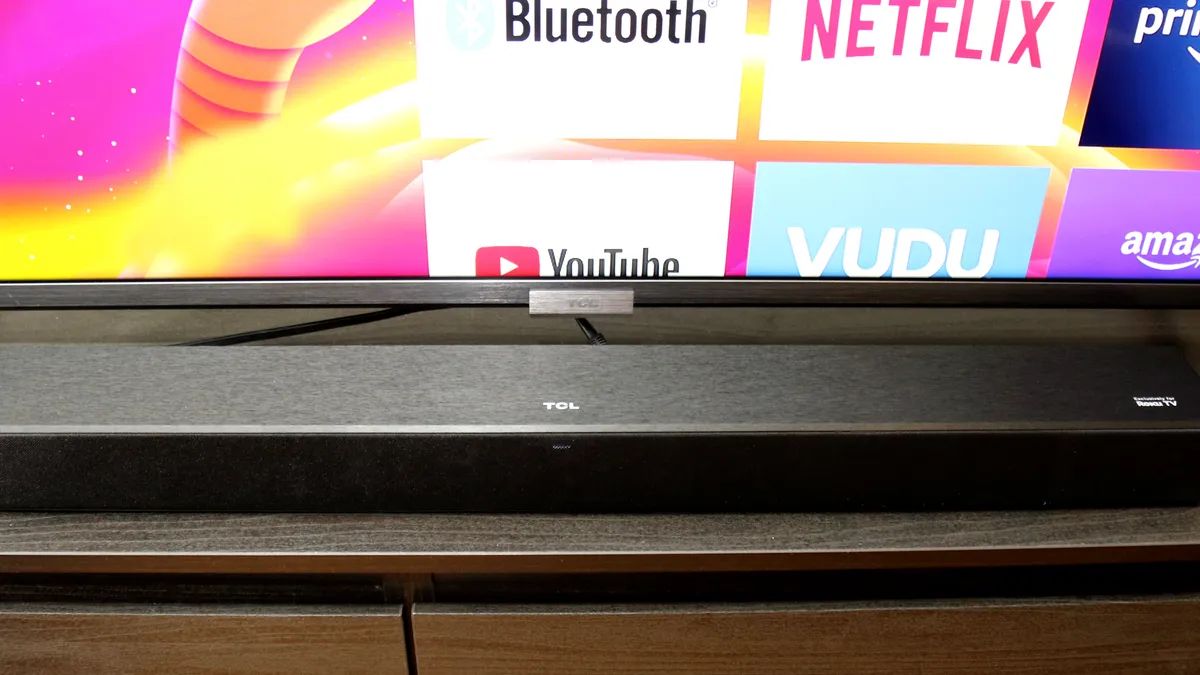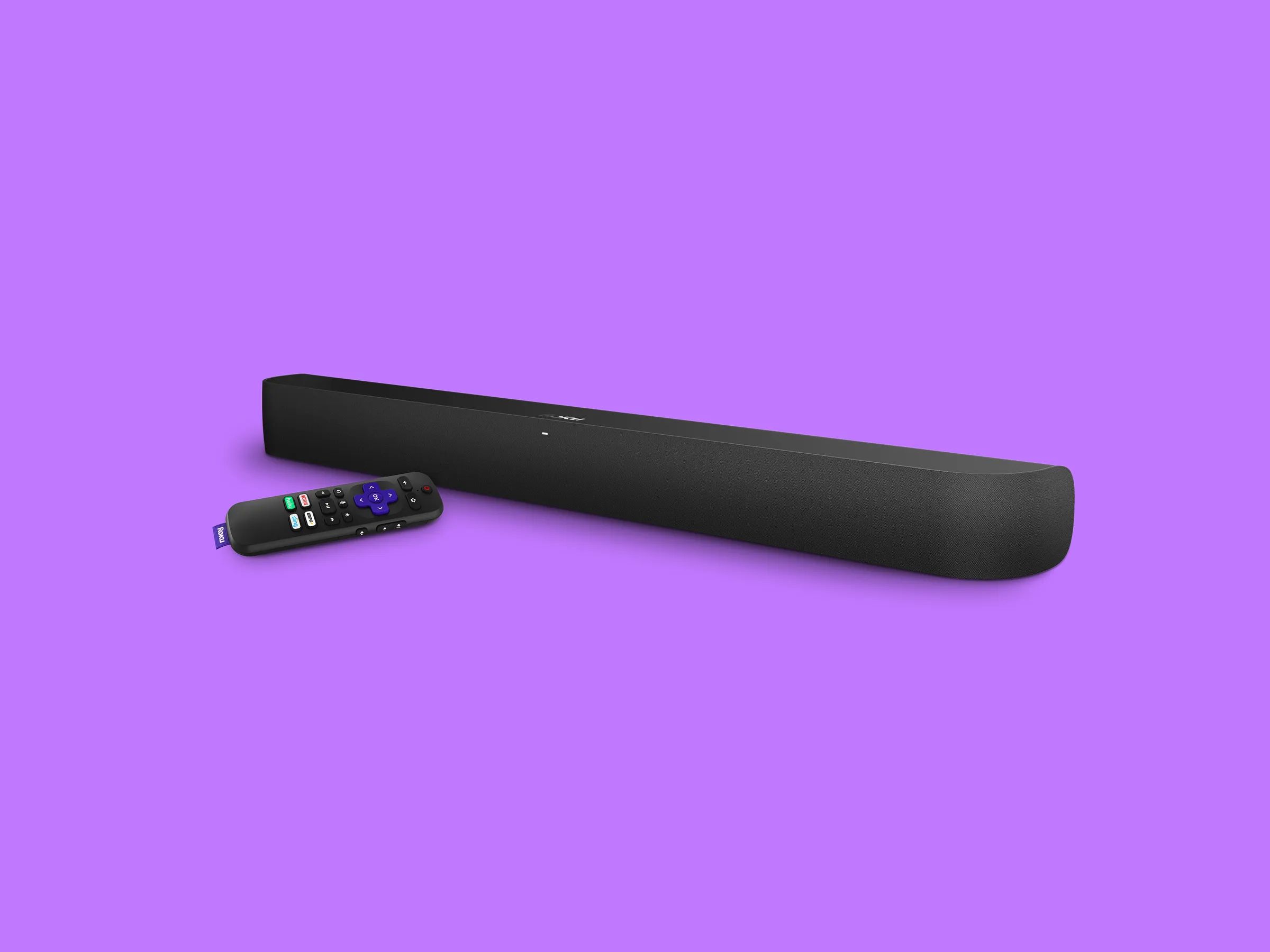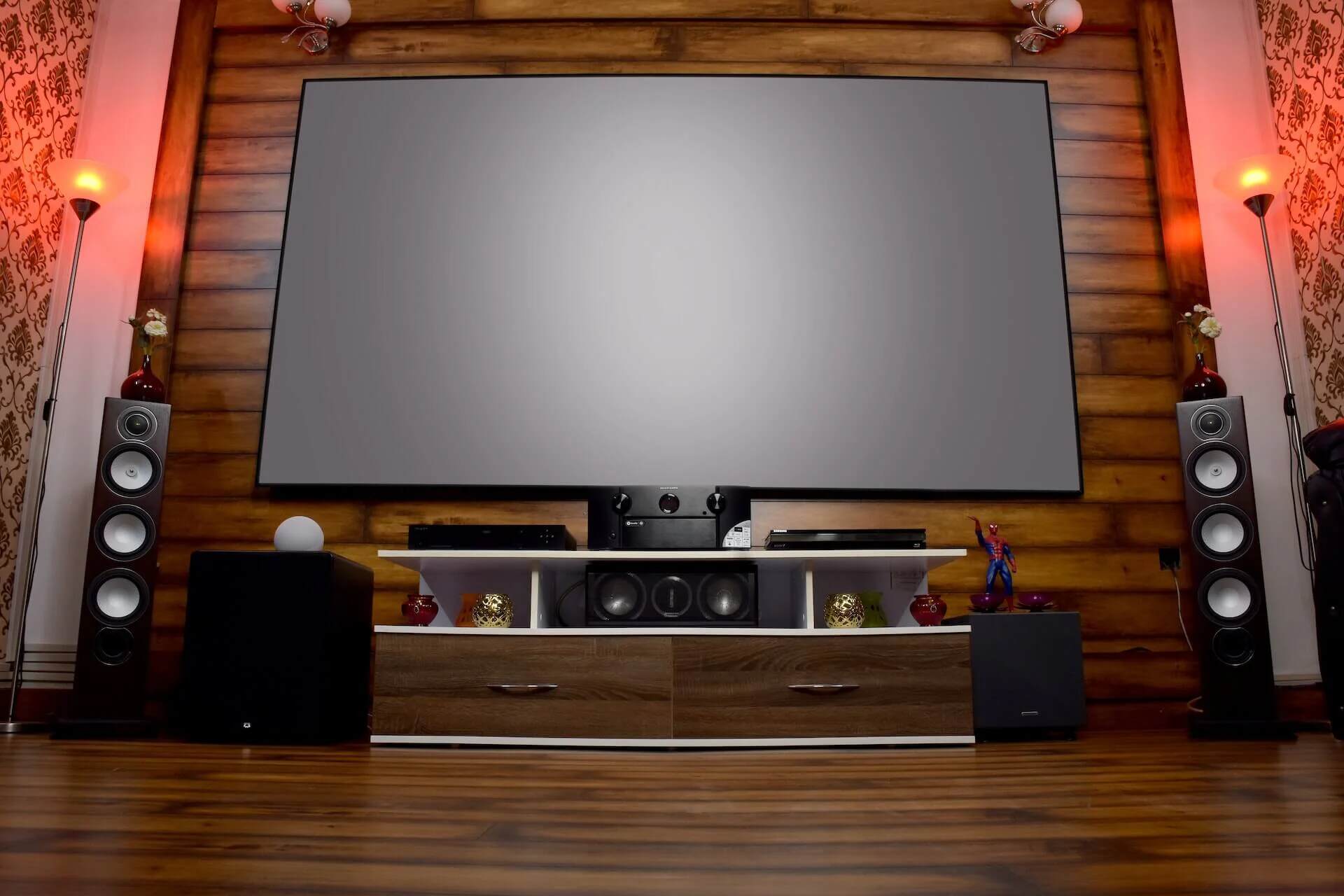Introduction
A soundbar is an essential accessory that can greatly enhance your TV viewing experience. It is a sleek, compact, and powerful audio device that delivers high-quality sound and immersive surround sound effects. While modern TVs have improved in terms of picture quality, their built-in speakers often lack depth and clarity in sound reproduction. This is where a soundbar comes in, providing a significant upgrade to your TV’s audio capabilities.
With a soundbar, you can enjoy richer and more detailed sound without the need for a complicated and space-consuming multi-speaker setup. It is a convenient and cost-effective solution for transforming your living room into a mini home theater.
In this guide, we will take you through the steps to get a soundbar to work with your TV seamlessly. Whether you are a tech novice or an experienced user, this guide will help you set up and configure your soundbar correctly so that you can enjoy the best audio experience possible.
What is a soundbar?
A soundbar is a single, elongated speaker system that is designed to enhance the audio output of your TV. It is typically placed in front of or underneath the TV and contains multiple built-in speakers to deliver a wide range of sound frequencies. Unlike traditional multi-speaker setups that require separate speakers and an AV receiver, a soundbar combines all the components in one streamlined package.
Soundbars come in various sizes and configurations, ranging from basic 2-channel models to more advanced systems with virtual surround sound and subwoofers for deep bass reproduction. They offer a significant improvement in audio quality compared to the built-in speakers found in most TVs, producing clear dialogue, immersive sound effects, and dynamic audio for movies, music, and games.
One notable advantage of soundbars is their simplicity and minimalistic design. They are compact and can be easily installed without the need for complex wiring or installation. Most soundbars nowadays incorporate wireless connectivity options such as Bluetooth, allowing you to stream audio from your smartphone or other devices.
Additionally, soundbars often come with a remote control or can be integrated into your TV’s remote, providing convenient access to volume control and sound modes. Some advanced soundbars even support voice control, allowing you to adjust settings or play music using voice commands.
Overall, a soundbar is a versatile and efficient solution to upgrade your TV’s audio. It can greatly enhance your entertainment experience by delivering crisp and immersive sound, whether you’re watching movies, playing games, or enjoying your favorite music.
Why use a soundbar with your TV?
There are several compelling reasons to use a soundbar with your TV. While modern TVs offer stunning visuals, their built-in speakers often struggle to deliver the same level of audio quality. Here are a few key benefits of using a soundbar:
1. Enhanced audio quality: Soundbars are specifically designed to improve audio quality and provide a more immersive experience. They deliver clear dialogue, dynamic sound effects, and rich bass, enhancing your overall enjoyment of movies, TV shows, and games.
2. Space-saving design: Compared to traditional surround sound speaker setups, soundbars are compact and space-saving. They can be easily mounted on the wall or placed on a TV stand, eliminating the need for multiple speakers and creating a cleaner and more aesthetic setup.
3. Ease of installation: Setting up a soundbar is typically straightforward and hassle-free. Most soundbars require minimal wiring and can be easily connected to your TV or other devices through HDMI, optical, or Bluetooth connections. You don’t have to deal with the complexity of positioning and wiring multiple speakers.
4. Versatility: Soundbars are not limited to improving your TV’s audio quality alone. Many models come with additional connectivity options, such as Bluetooth, allowing you to stream music from your smartphone or tablet. Some soundbars even have built-in smart assistants, giving you the convenience of controlling your soundbar through voice commands.
5. Cost-effective solution: Investing in a soundbar is often a more affordable option compared to building a multi-speaker surround sound system. You can still enjoy a significant audio upgrade without breaking the bank.
6. Compatible with various audio formats: Soundbars are designed to support various audio formats, including Dolby Digital and DTS, ensuring compatibility with a wide range of content. This means you can experience high-quality sound whether you’re watching movies, streaming shows, or playing games.
In summary, using a soundbar with your TV provides a multitude of benefits, including improved audio quality, space-saving design, ease of installation, versatility, cost-effectiveness, and compatibility with different audio formats. It’s a worthwhile investment that takes your TV viewing experience to the next level.
Step 1: Check compatibility with your TV
Before setting up a soundbar with your TV, it’s important to ensure compatibility between the two devices. Here are a few key factors to consider:
1. Connectivity options: Check whether your TV and soundbar have compatible connectivity options. The most common connections include HDMI, optical audio, and Bluetooth. Make sure that your TV has the necessary ports and that your soundbar supports the same connectivity options.
2. Audio formats: Confirm that your soundbar supports the audio formats used by your TV and media content. Most soundbars support popular formats like Dolby Digital and DTS, but it’s always a good idea to double-check to avoid any compatibility issues.
3. TV size: Consider the size of your TV and choose a soundbar that complements it. Soundbars are available in various lengths, and it’s generally recommended to match the size of the soundbar with the width of your TV for an aesthetically pleasing setup.
4. Mounting options: If you plan to mount your TV on the wall, ensure that the soundbar is also compatible with wall mounting. Some soundbars come with mounting brackets while others may require additional accessories. Check the specifications of both your TV and soundbar to confirm compatibility.
5. Power requirements: Verify if your soundbar requires a separate power source or if it can be powered through the TV. Depending on the model, some soundbars may need to be plugged into an electrical outlet, while others can be powered directly from the TV via a USB or HDMI connection.
6. Wireless compatibility: If you prefer a wireless setup, check if your soundbar supports Bluetooth or Wi-Fi connectivity. This allows you to stream audio from your mobile devices or connect to your home network for access to online music services or streaming platforms.
By carefully checking compatibility between your TV and soundbar, you can ensure a smooth and hassle-free setup process. This step is essential to avoid any compatibility issues that may arise during setup or cause audio playback problems.
Step 2: Connect the soundbar to your TV
Once you have verified the compatibility between your TV and soundbar, it’s time to proceed with connecting the two devices. Follow these steps to establish a connection:
1. Identify the available ports: Take a look at the back of your TV and soundbar to identify the available ports. Commonly used ports include HDMI, optical audio, and Bluetooth. It’s important to choose the connection option that best suits your setup and preferences.
2. Choose the connection method: Depending on your soundbar and TV model, select the appropriate connection method. Here are the most common options:
- HDMI: This connection method provides the highest audio quality and the ability to transmit both audio and video signals. Connect one end of the HDMI cable to the HDMI ARC (Audio Return Channel) port on your TV and the other end to the HDMI ARC port on your soundbar. Enable the ARC feature in your TV’s settings.
- Optical audio: If your TV and soundbar have optical audio ports, you can use an optical audio cable to establish a connection. Simply connect one end of the cable to the optical audio output of your TV and the other end to the optical audio input of your soundbar.
- Bluetooth: If both your TV and soundbar support Bluetooth, you can pair them wirelessly. Enable Bluetooth on both devices and follow the on-screen prompts to complete the pairing process.
3. Additional connections: Depending on your audio setup preferences, you may want to connect additional devices to your soundbar. For example, if you have a Blu-ray player, gaming console, or streaming device, consider connecting them to your soundbar using HDMI passthrough or additional HDMI ports on the soundbar.
4. Power up: Once you have made the necessary connections, plug in the power cords of both your TV and soundbar. Ensure that they are securely connected to power sources and switch on both devices.
5. Test the audio: Play a piece of audio or video content on your TV to test if the sound is coming from the connected soundbar. Adjust the volume as needed using either the soundbar’s remote control or the TV’s remote if it supports controlling external audio devices.
By following these steps, you should be able to successfully connect your soundbar to your TV. The specific connections may vary depending on your TV and soundbar models, so always refer to the user manuals for detailed instructions.
Step 3: Set up and configure the soundbar
After connecting your soundbar to your TV, the next step is to set it up and configure the settings to optimize your audio experience. Here’s what you need to do:
1. Placement: Ensure that your soundbar is positioned correctly for optimal sound performance. Ideally, it should be placed directly in front of or underneath your TV, aligned with the center of the screen. Make sure it is not obstructed by any objects and has a clear line of sight to your listening area.
2. Mode selection: Most soundbars come with different audio modes to suit various types of content, such as movies, music, and dialog enhancement. Experiment with different modes to find the one that enhances your listening experience the most. You can usually cycle through the modes using the soundbar’s remote control or the control buttons on the device itself.
3. Equalizer settings: Some soundbars allow you to adjust the equalizer settings to fine-tune the audio output to your preference. This includes the bass, treble, and midrange levels. Spend some time experimenting with these settings to achieve the desired sound quality for your specific listening environment and personal preferences.
4. Subwoofer pairing: If your soundbar comes with a separate subwoofer, ensure that it is properly paired with the soundbar. Follow the manufacturer’s instructions to establish a wireless connection between the soundbar and subwoofer. This will ensure that you are getting the full range of low-frequency sounds for a more immersive audio experience.
5. Remote control programming: If your soundbar has its own remote control, you may need to program it to work with your TV’s remote control. This will allow you to control the basic soundbar functions, such as volume and power, using your TV’s remote. Refer to the user manual for instructions on how to set up this functionality.
6. Firmware updates: Check if there are any firmware updates available for your soundbar. Manufacturers often release firmware updates to improve performance or add new features. Visit the manufacturer’s website or use their dedicated software to check for updates and follow the instructions to install them if necessary.
7. Room calibration: Some advanced soundbars offer room calibration features that adjust the audio output based on your room’s acoustics. Follow the manufacturer’s instructions to perform a room calibration setup if available. This will dynamically optimize the soundbar’s performance based on your unique listening environment.
By going through these setup and configuration steps, you can fine-tune your soundbar to deliver the best audio experience for your TV viewing needs. Take the time to explore the different settings and options available to maximize the potential of your soundbar.
Step 4: Adjust settings on your TV
After setting up and configuring your soundbar, it’s important to ensure that your TV’s settings are optimized to work in conjunction with the audio output from the soundbar. Follow these steps to adjust the settings on your TV:
1. Audio output settings: Access your TV’s sound settings menu and select the appropriate audio output option. Choose the audio output that corresponds to the connection method used with your soundbar, such as HDMI ARC or optical audio. This will direct the audio output from your TV to the connected soundbar.
2. Disable TV speakers: To prevent audio from playing through your TV’s built-in speakers as well as the soundbar, make sure to disable the TV’s internal speakers. Look for an option in the sound settings menu that allows you to turn off the TV speakers or set them to “external speakers” or “audio system.”
3. Audio format settings: Check the audio format settings on your TV to ensure that they match the capabilities of your soundbar. For example, if your soundbar supports Dolby Digital or DTS, make sure that the TV’s audio output is set to these formats. This will ensure optimal compatibility and allow you to fully enjoy the audio capabilities of your soundbar.
4. Adjust volume leveling: Some TVs come with volume leveling or audio enhancement features. Explore the sound settings menu to see if your TV has options like “auto volume leveling” or “virtual surround sound.” Experiment with these settings to find the optimal balance for your audio experience, taking into account the capabilities of your soundbar.
5. Additional TV settings: Depending on your personal preferences and the specific capabilities of your TV, you may want to adjust other audio-related settings. This may include options such as bass, treble, equalizer presets, or dialogue enhancement. Explore the TV’s settings menu to see what options are available and adjust them according to your preferences.
6. Test and fine-tune: Play different types of audio content, such as movies, TV shows, and music, to test the soundbar’s performance and the TV’s settings. Adjust the volume on both the soundbar and the TV to achieve a comfortable and balanced sound level. Make any necessary tweaks to the settings to suit your specific audio preferences.
By adjusting the settings on your TV to work harmoniously with your soundbar, you can ensure that you are maximizing the audio quality and overall listening experience. Take the time to explore the various options available and fine-tune the settings to your liking.
Step 5: Test the soundbar with your TV
Now that you have set up and adjusted the settings on both your soundbar and TV, it’s time to test the audio performance and ensure that everything is working as expected. Follow these steps to test your soundbar with your TV:
1. Play different types of content: Start by playing various types of content, such as movies, TV shows, and music, to gauge the performance of your soundbar. Pay attention to the clarity of dialogue, the depth of the bass, and the overall immersive experience.
2. Adjust volume levels: Test the soundbar’s volume levels by increasing or decreasing the volume gradually using the soundbar’s remote control or dedicated buttons. Ensure that the volume changes correspond accurately and smoothly with the sound output from the TV.
3. Test source inputs: If you have connected multiple devices to your soundbar, such as a gaming console or a Blu-ray player, switch between the different input sources to ensure that they are all delivering the audio output through the soundbar correctly.
4. Assess surround sound effects (if applicable): If your soundbar supports virtual surround sound or has additional speakers or subwoofers, test the surround sound effects. Watch movies or shows specifically designed for surround sound to see if the audio is properly immersing you in the action.
5. Fine-tune settings if necessary: If you notice any audio imbalances or if the sound isn’t meeting your expectations, revisit the settings on both your soundbar and TV. Make minor adjustments to equalizer settings, sound modes, or other relevant settings to achieve the desired audio quality.
6. Seek assistance if issues persist: If you encounter any persistent issues, such as audio dropouts, distorted sound, or connectivity problems, refer to the user manual of your soundbar and TV to troubleshoot or seek assistance from the manufacturer’s support team.
Testing your soundbar with your TV is an essential step to ensure that you’re getting the best audio performance possible. By following these steps and making any necessary adjustments, you can fully enjoy the enhanced audio experience that your soundbar provides.
Troubleshooting common issues
While setting up and using a soundbar with your TV, you may encounter some common issues. Here are a few troubleshooting tips to help you resolve them:
1. No sound: First, ensure that the soundbar is turned on and connected to the TV properly. Check the volume levels on both the soundbar and the TV. If using the HDMI ARC connection, make sure that the ARC feature is enabled in the TV’s settings. Try testing different audio sources and checking the audio output settings on your TV. If the issue persists, try power cycling both the TV and soundbar by unplugging them from the power source, waiting for a few seconds, and then plugging them back in.
2. Audio delay: If you experience an audio delay where the sound does not sync with the video, check the settings on your TV and soundbar. Look for options like “lip sync” or “audio delay” in the sound settings menu and adjust the timing until the audio matches the video. If using an external source like a gaming console or Blu-ray player, make sure that it is properly synced with the TV and soundbar.
3. Connectivity issues: If you are experiencing connectivity issues with your soundbar, such as dropped Bluetooth connections or intermittent sound, make sure that there are no obstructions between the soundbar and the TV or source device. Check for any interference from other wireless devices. Ensure that the firmware of both the soundbar and TV is up to date. If using a wired connection, ensure that the cables are securely connected and not damaged.
4. Soundbar not turning on or unresponsive: If your soundbar does not turn on or is unresponsive, double-check the power source and ensure that it is properly plugged in. Try using a different power outlet. If the issue persists, check if the soundbar has a power-saving mode or sleep timer enabled. Consult the user manual or contact the manufacturer’s support for further assistance.
5. Poor audio quality: If you’re not satisfied with the audio quality of your soundbar, review the equalizer settings and sound modes on both the soundbar and TV. Adjust the bass, treble, and other settings to enhance the sound quality to your liking. Additionally, make sure that the audio format settings on your TV are compatible with the capabilities of your soundbar. Experiment with different audio sources and content to see if the issue persists.
6. Remote control issues: If you’re experiencing issues with the soundbar’s remote control, check the batteries and ensure that they are properly inserted. Remove any obstructions that may be blocking the remote’s signal. If using a universal remote to control both the TV and soundbar, make sure it is programmed correctly. Refer to the user manual for instructions on how to program or troubleshoot remote control issues.
If you’re unable to resolve the issues using these troubleshooting tips, consult the user manuals of your TV and soundbar or reach out to the manufacturer’s support team for further assistance. They can provide personalized guidance for your specific setup and address any other concerns you may have.
Conclusion
Setting up a soundbar with your TV can significantly enhance your audio experience and bring your entertainment to life. By following the steps outlined in this guide, you can ensure a seamless connection and configuration between your TV and soundbar.
Remember to check compatibility between your devices, connect the soundbar using the appropriate method, and adjust the settings on both the soundbar and TV for optimal audio performance. Test the soundbar with various types of content and make any necessary adjustments to fine-tune the settings to your liking.
If you encounter any issues, troubleshoot common problems like no sound, audio delay, connectivity issues, or remote control problems. Don’t hesitate to consult the user manuals or contact the manufacturer’s support team for further assistance.
With a properly set up soundbar, you can enjoy immersive sound, clear dialogue, and a more engaging audio experience when watching movies, TV shows, playing games, or listening to music.
So, go ahead and elevate your TV viewing experience with a soundbar. Immerse yourself in the rich, high-quality sound that brings your favorite content to life, and enjoy an audio experience that complements the stunning visuals of your TV.







